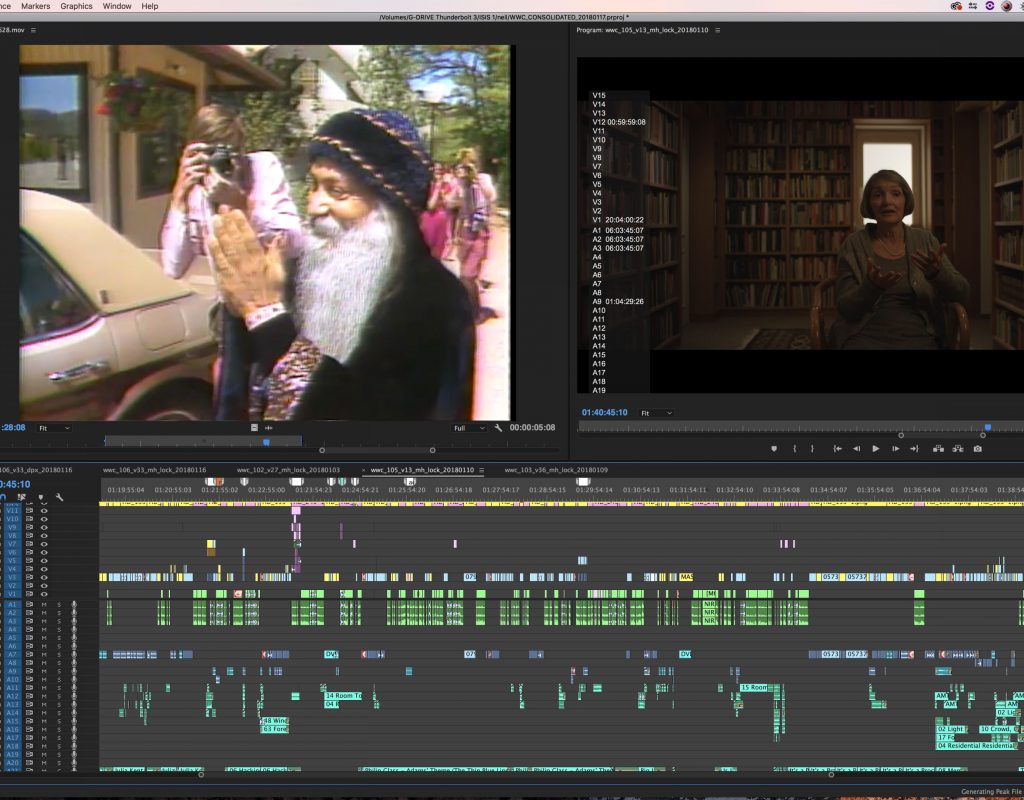Neil Meiklejohn is a documentary film editor who edited the documentaries Long Live Benjamin,and The Battered Bastards of Baseball. He also worked on an episode of The New Yorker Presents. For this interview, we discussed his editing of the Netflix series Wild Wild Country, which was nominated for a 2018 Emmy for Outstanding Picture Editing for Nonfiction Programming.
(This interview was transcribed with SpeedScriber. Thanks to Martin Baker at Digital Heaven)
HULLFISH: You’ve worked with these guys before. Are the directors brothers?
MEIKLEJOHN: Yes, the Way brothers. Chapman and Maclain Way. Their grandfather is Bing Russell, who was the sheriff on Bonanza. Kurt Russell is his son. So, Bing and Kurt, during a slow time during the 70s, went up to Portland and bought a minor league baseball team. The Way brothers made a kind of “Bad News Bears” baseball documentary about their uncle and their grandfather. They had a long edit, and a couple weeks before Sundance, they asked for my help on that documentary. So, we worked around the clock for a few weeks and then got it into Sundance, and sold to Netflix and spent another few weeks prepping it for them. That’s how I got to know them, because we were in the trenches together for a few months working on their first film.
While they were working on that, they were flying up to Portland to get archival footage for the baseball movie. At one point when one of them was up there, one of the archivists said, “By the way, have you ever seen any of this footage?” And showed him some of the Rajneesh footage. They had 300 hours of this and he brought some of it back and we thought, “We really should make a film about this as soon as we can.” That’s kind of how the project got started.
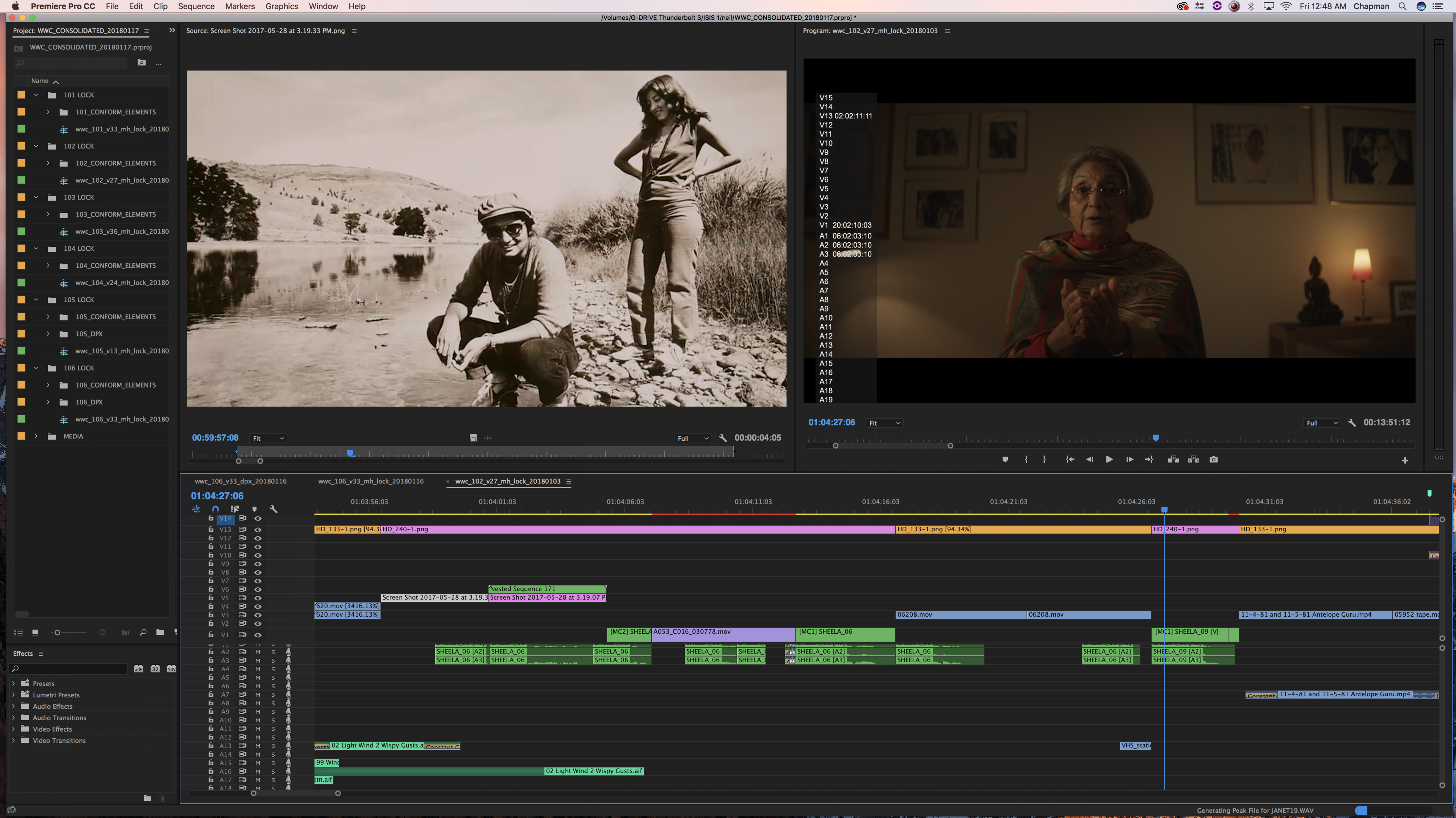
HULLFISH: Did you know as you were constructing it that it was going to be 6 approximately one-hour episodes? How did that decision on length get made?
MEIKLEJOHN: There have been a few feature-length films about the topic, and a few hour-long specials, but we thought they didn’t go into the details. Each one of the controversies on the ranch could be an hour-long film itself. We pretty quickly realized these are big topics that are very complicated and there are a lot of different points of views about each of the controversies. We also had so much footage. From the archive we had probably 300 hours of news footage and then 100 hours of interviews, so we had plenty to work with. The Portland news stations all knew that they had a bigger story, so they all saved their tapes and eventually donated it to the Oregon Historical Society. It was a treasure trove of archival footage. The commune was also very excited about what they were doing, and they wanted to share that with the world, so they were constantly welcoming whoever showed up on the range. They had what they called the Twinkies, which were the pretty 20-something hostesses of the ranch that would take the news people or whoever showed up around on tours to show off everything on the ranch. News people were there constantly so there was just a ton of footage of this place.
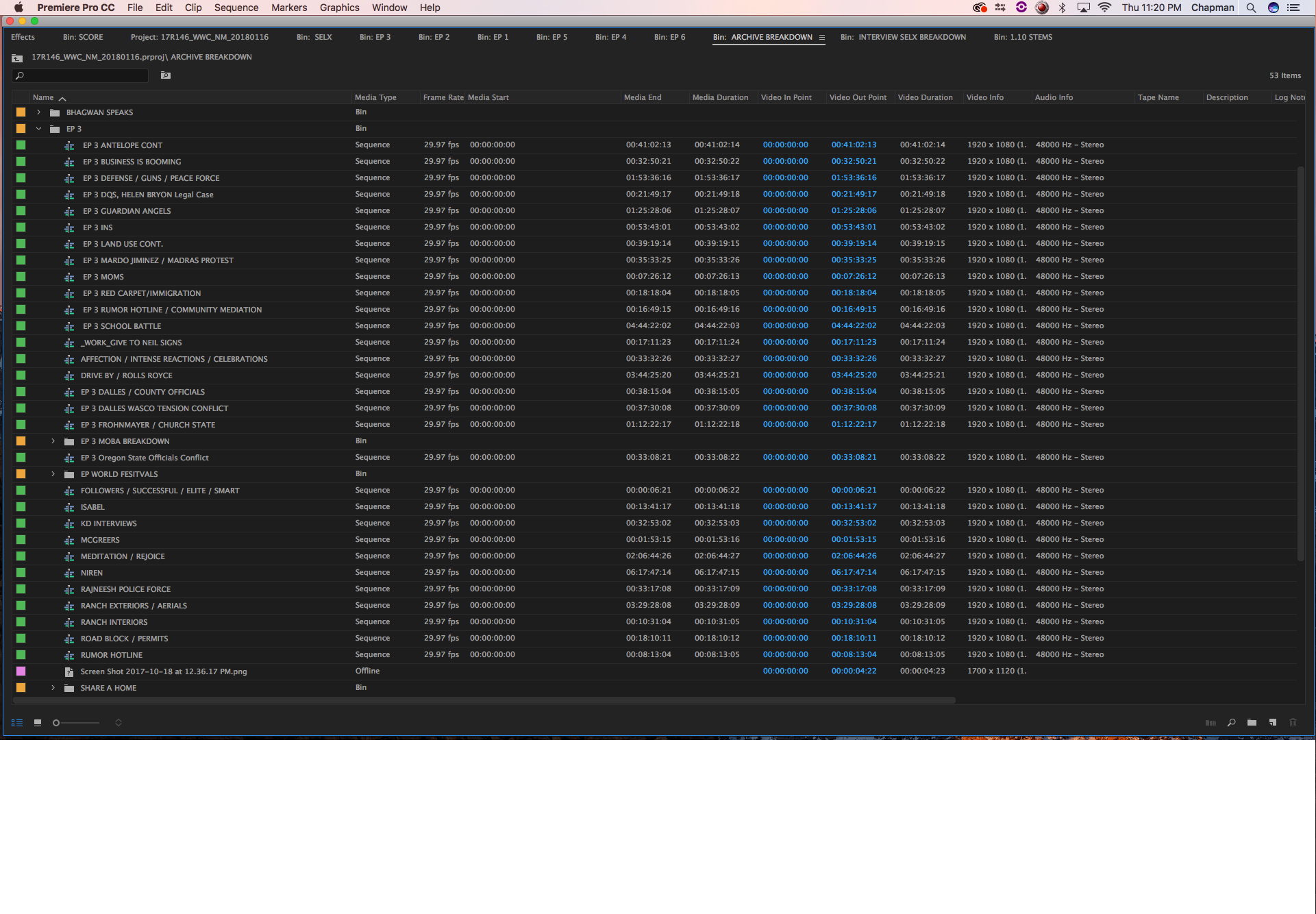 HULLFISH: Looking at your screenshots that you sent me from Premiere Pro, I get the sense that you agree with many documentary film editors on the need to compartmentalize and break your story into digestible parts. Can you talk to me a little bit about what you did to be able to just keep track of and find the material as you were starting to tell the story?
HULLFISH: Looking at your screenshots that you sent me from Premiere Pro, I get the sense that you agree with many documentary film editors on the need to compartmentalize and break your story into digestible parts. Can you talk to me a little bit about what you did to be able to just keep track of and find the material as you were starting to tell the story?
MEIKLEJOHN: We wanted to tell the story from the perspective of both sides and we tried to balance them. Originally, we considered jumping around in time a little bit, because it could be more interesting, but it really became very apparent that it was going to be a story which we told a to z. And I think part of that is just because everything built on the previous thing.
Once we brought everything into Adobe Premiere Pro, I started organizing everything from the beginning of the story to the end of the story. I went through the main interviews first, I went through Sheela’s interview first, and tried to sort out how she saw the story. And then once I did that, I could create buckets for each kind of moment or bullet point or each tent pole. And then as I went to the next interview I could add to each bucket or sequence of that story. So, I would have a bucket about the homeless situation and have all of my soundbites from all the different entities there. From there I did the exact same thing with the archives, so I created a bullet-point structure of each of them with all my soundbites and then go into the archive, and I would put in all the pictures that would back that up. So, I could say, “OK, this is everything I have about this” and then I was able to whittle that down to just the best bits, and I would pull selects. In the editing process, I thought of everything as these events and I could just focus on that and try and make that scene as interesting as possible and then I would jump onto the next.
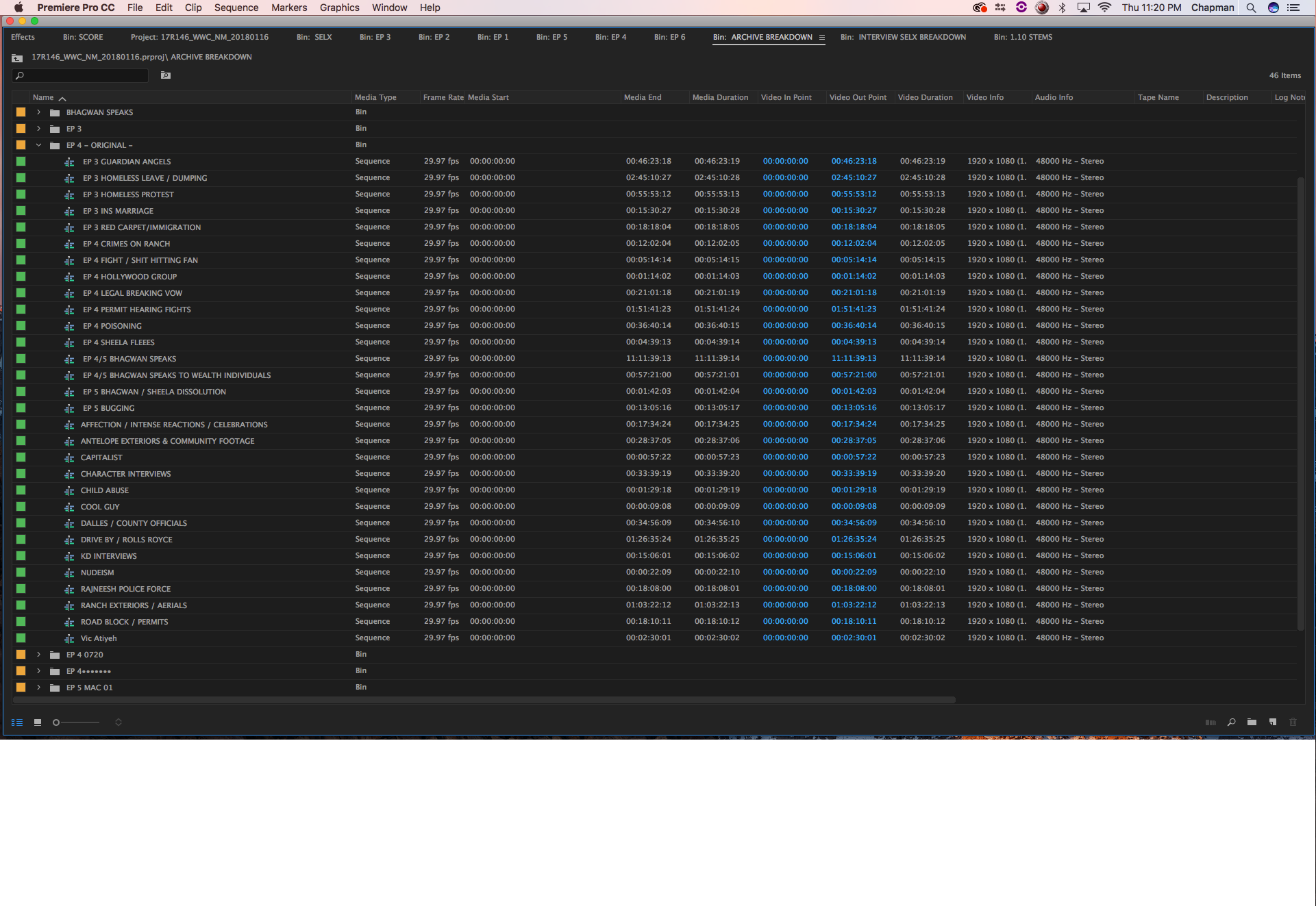 HULLFISH: Was this entire body of 400 hours of material just one giant project in Premiere?
HULLFISH: Was this entire body of 400 hours of material just one giant project in Premiere?
MEIKLEJOHN: For the most part it was. Premiere was really good at handling everything. I would have a bin with everything in it, and then I would make another bin which would be the selects or the breakdown of that footage. I always was going back to my longer break-down. Because it’s a documentary, you were always looking for a shot or a line, so I was often going back to old edits. For the most part, I kept all of the footage and all of the breakdowns and all of the edits in one project.
HULLFISH: Wow. And from a quick glance at your screen captures of sequence bins, it looks like you typically broke each episode into about six acts. And how much material would you have for each act?
MEIKLEJOHN: I don’t know. Each one was so different. Some things weren’t really covered at all. And for other things there was a ton of stuff like for example when the Bhagwan began to speak, every news agency in the world was down there. Or at least it felt like it. I wouldn’t even want to guess but we probably had like 40 hours of material from that.
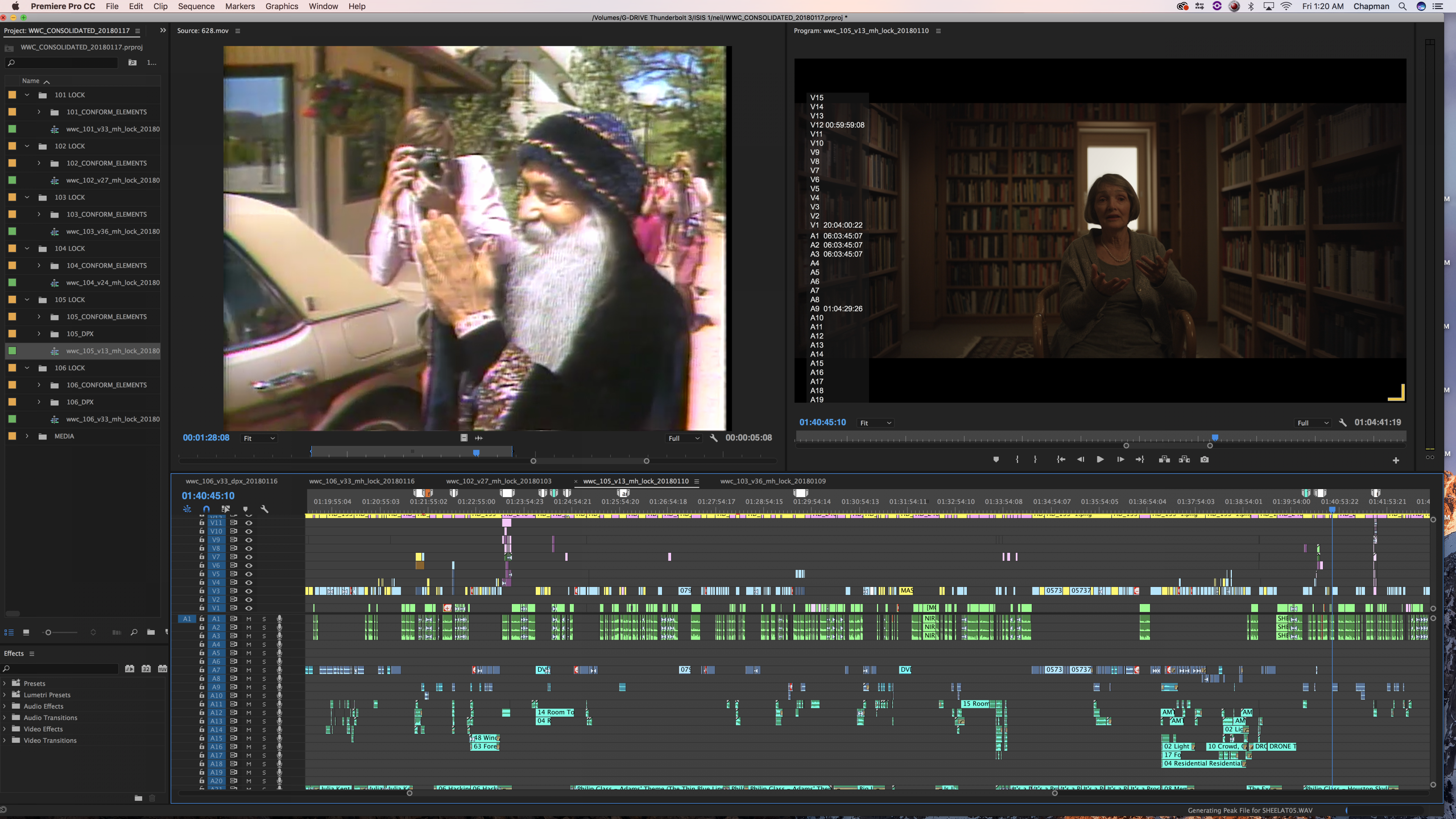 HULLFISH: How long were you editing these six episodes?
HULLFISH: How long were you editing these six episodes?
MEIKLEJOHN: We started in March and I had an assistant for the first couple of weeks — a couple of assistants, actually — to help get everything in and get everything organized and then I was kind of on my own. And we went up right about until February for Sundance. It took me about a month to rough-in each episod, and the next four months of revising. It was pretty quick. We did about seven hours in less than a year.
HULLFISH: Did you know it was going to be seven hours when you started? Or were you just saying, “We’re going to completely tell the story and figure out how many episodes and how long they’re going to be later?”
MEIKLEJOHN: One thing that we discussed with Netflix was that it would be six episodes. So that was always the goal. Each episode varies in length.
HULLFISH: Episode 3 is the one you’re up for an Emmy for. I love the way it begins.
MEIKLEJOHN: Episode 2 ends with the bombing of their hotel so we wanted to amp things up. Plus, we wanted to do our cold open on a very cinematic moment where you could just let the picture play and everyone understood the story.
HULLFISH: I love the fact that it didn’t just start with the guns, it actually started with prayer.
MEIKLEJOHN: And they always prayed before they started shooting.
HULLFISH: I loved the VHS noise transitions throughout. I’m assuming those were constructed.
MEIKLEJOHN: When they presented to Netflix we didn’t have a lot of time, so we really wanted to show our best rough cut. We really worked on our transitions. For finishing, we hired on a sound design and mixing team called Unbridled Sound (unbridledsound.com) and they were really amazing and helped with the transitions and really gave this great bed to all this old archival footage that made it feel like you were there, experiencing it. Also, the third Way brother (Brocker Way) did all of the cinematic score and it was amazing and it fits really well with the sound design.
HULLFISH: What was your strategy when you were trying to create a new act? Did you start with a radio cut of the entire thing and then start adding visuals to that or were you going in order visually and audio to construct it?
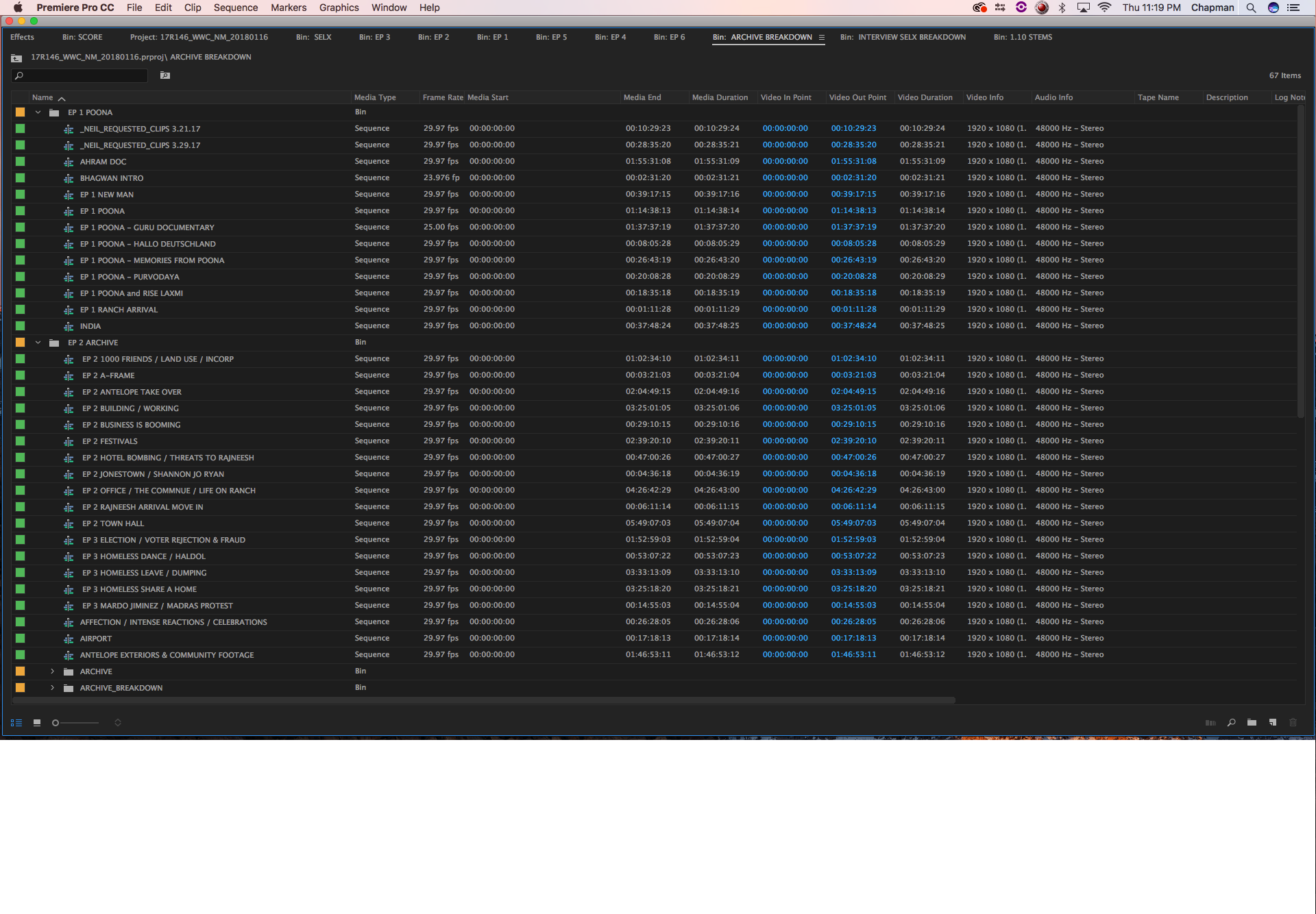 MEIKLEJOHN: I kind of do both. For me, the interesting documentaries are ones where each scene kind of feels new. We have scenes where it’s almost like a verite doc. And we had other scenes where it was almost talking head the whole time.
MEIKLEJOHN: I kind of do both. For me, the interesting documentaries are ones where each scene kind of feels new. We have scenes where it’s almost like a verite doc. And we had other scenes where it was almost talking head the whole time.
We kind of built each scene twice. We would build a scene from one group’s perspective, then we’d switch around and build it from the opposing side’s perspective.
HULLFISH: One thing that I have a hard time with when I’m cutting documentaries is just leaving those spaces for it to breathe. When you’re building a rough cut and you’re creating a story from soundbites and interviews, where in the process do you feel, “You know. I just need a break here to let the audience soak that in?” Is it on the radio cut pass? Does it happen three or four passes later in the cut?
MEIKLEJOHN: Good point. Sometimes I felt like we either needed to do it rhythmically or you kind of needed to clean your palette. You’re dealing with some disturbing stuff and you just needed a lot of palette cleansers throughout.
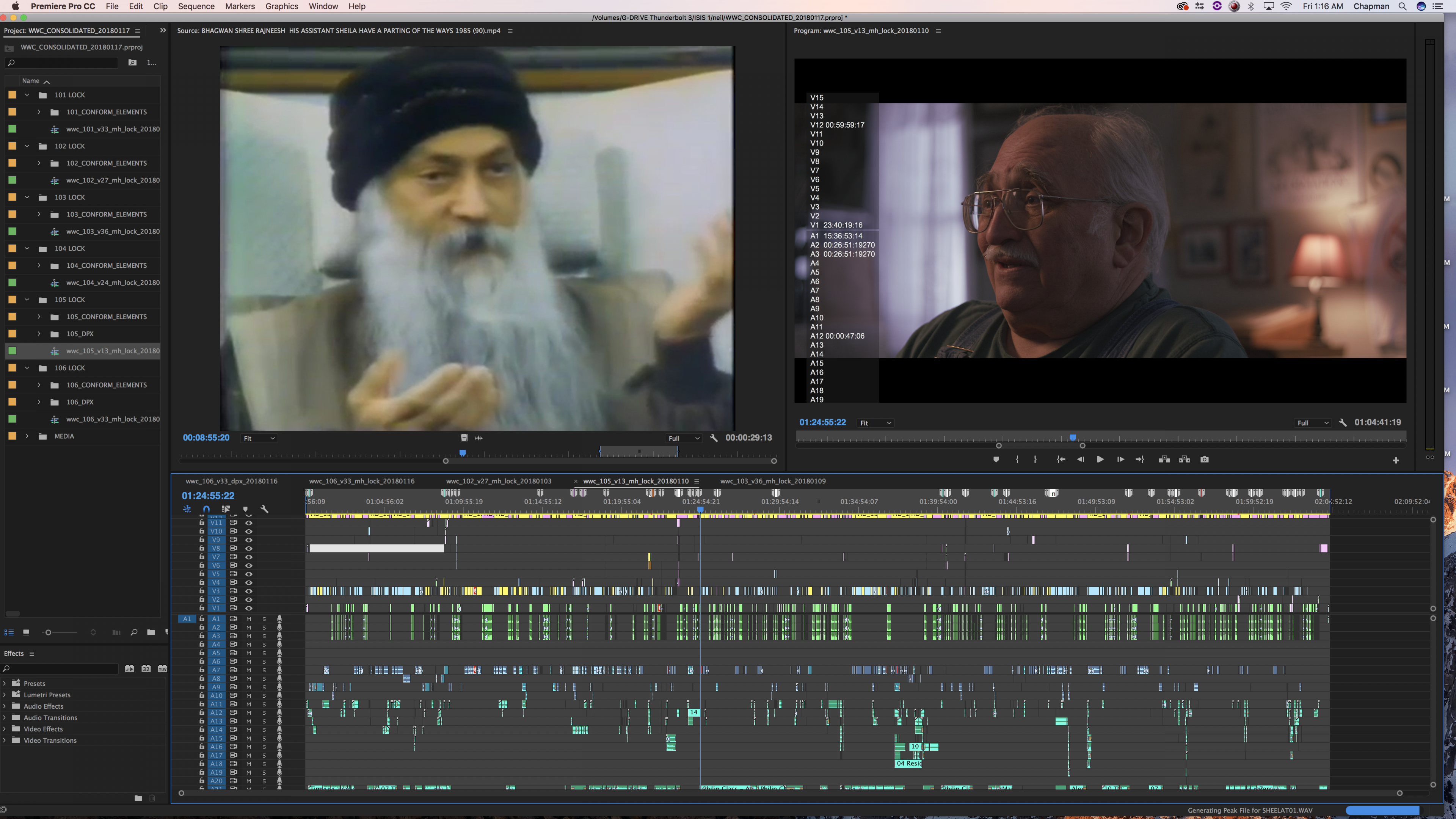
HULLFISH: And you were just sensing where those moments needed to be?
MEIKLEJOHN: Yeah. A lot of it was the start of a scene or sometimes you could sit in the archives and just get this experiential viewing experience for a bit before you let the talking heads take over again.
HULLFISH: Did you build this directly from the source material with no papercut?
MEIKLEJOHN: We didn’t really do a papercut at all. We definitely had it transcribed, and if somebody swallowed a word, and we needed to go find it in the transcript, we could find it. But for the most par,t I just had it organized where I knew everything about this topic and I just wanted to use the best soundbite or talking head that I had.
HULLFISH: You had hours of interviews and soundbites. Did you subclip stuff? How do you organize it and break it down so you had access?
MEIKLEJOHN: I had a master sequence of Sheela’s interview from the beginning to the end. Then, based on topics, I wouldn’t subclip it, but I would make new sequences on those topics in Premiere. So, for any topic, I had a sequence of selects and I would go in and pull from that. Also, for some of these topics, I’d have big sub-topic selects sequences.
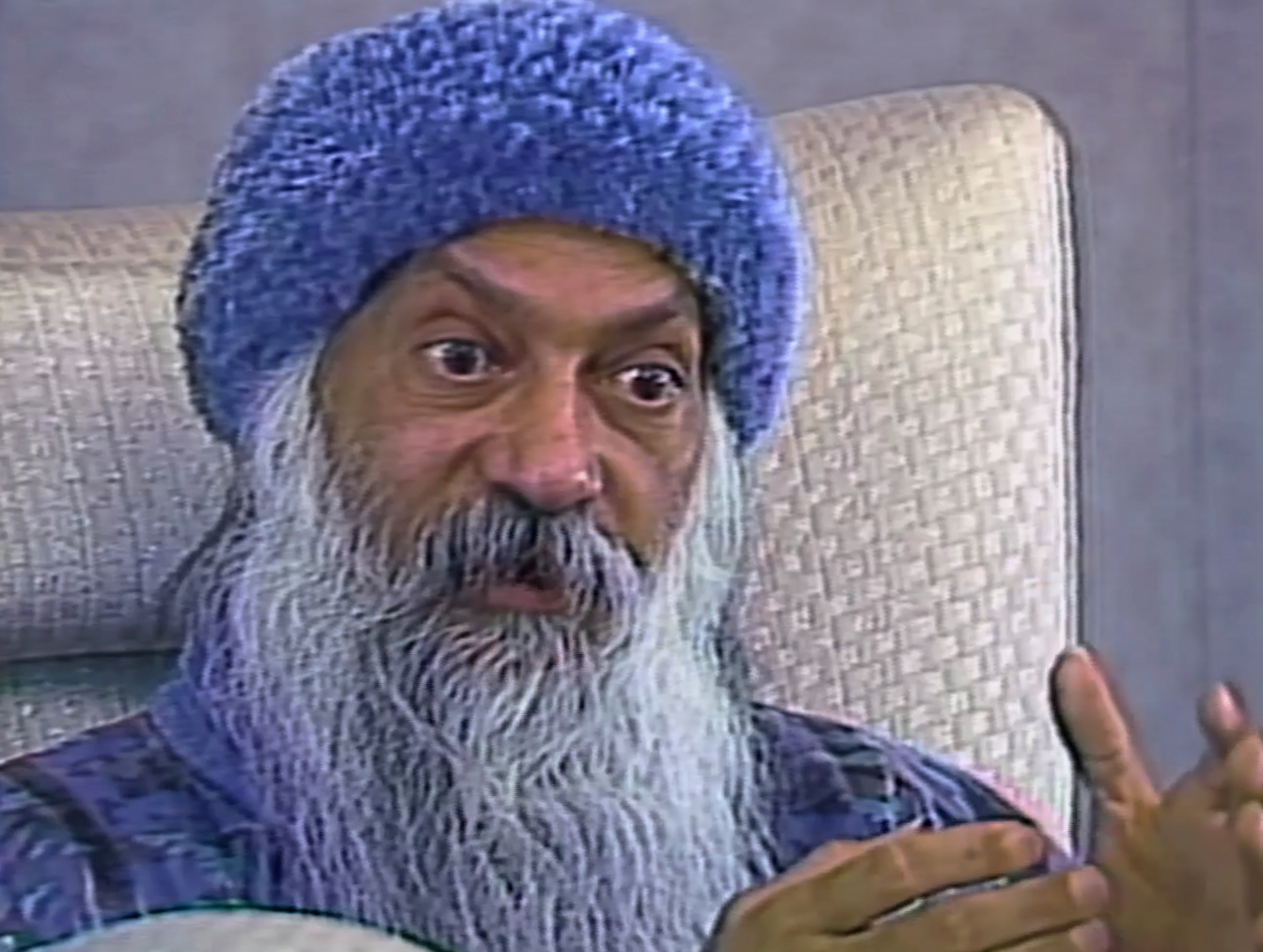
HULLFISH: One of the things I loved about the editing was the transitions between topics I thought were really smooth. Were you always considering what the next thing was and how you were going to get to it instead of just saying, “Now we’re talking about a different topic.”
MEIKLEJOHN: I looked at the whole film and as you know, you always want a great beginning and a great ending. But we also wanted that for each episode. Inside the episode, we also tried to have a great beginning and a great ending for each act. We always wanted a cliff-hanger ending for each episode to make people click on the next episode. We wanted something to make the audience lean forward. And I think the same goes for each scene. You want each scene to be as strong as possible, and in a weird way I think you need to have a strong thesis statement upfront — like what is this scene about so the audience can just quickly understand why they’re watching this and then just be able to enjoy the archive or enjoy people’s reactions or thoughts about these statements. Then you want a very strong way to get out. That was something I worked on a lot. And you know a lot of times it’s almost a cliffhanger type line that just tees up the next section. So, I think we really wanted to make sure not just the body of our scenes or sections were interesting but to me, the ins and outs of a scene are almost more important than the content within.
HULLFISH: I think a lot of documentary editors do this, but I loved some of your choices to hold past the end of a statement. One of them I was thinking about was the rancher that was on the board of Antelope where he said, “they didn’t know I was spying on them.” And then you just sat there without cutting to the next thing for a while just to kind of see his glee.
MEIKLEJOHN: Yes. That’s the thing with the talking head performances. It’s not just what they say, it’s their facial expression and their body language. Do they seem honest or are they trying to pull one over on you? Sometimes peoples’ eyes tell more of a story than what they say. We really kind of embrace that. Even if it was an awkward laugh or staring off into the clouds because they’re deep in thought. We found all that stuff super-important to the storytelling.
HULLFISH: There’s another spot where a guy talks and then reaches over to get a drink of water, and the drink is kept in at the end… and then the same guy starts another comment by drinking from a glass. I love that those things weren’t lost by you trying to compartmentalize and deciding that the beginning of the question doesn’t start till he speaks.
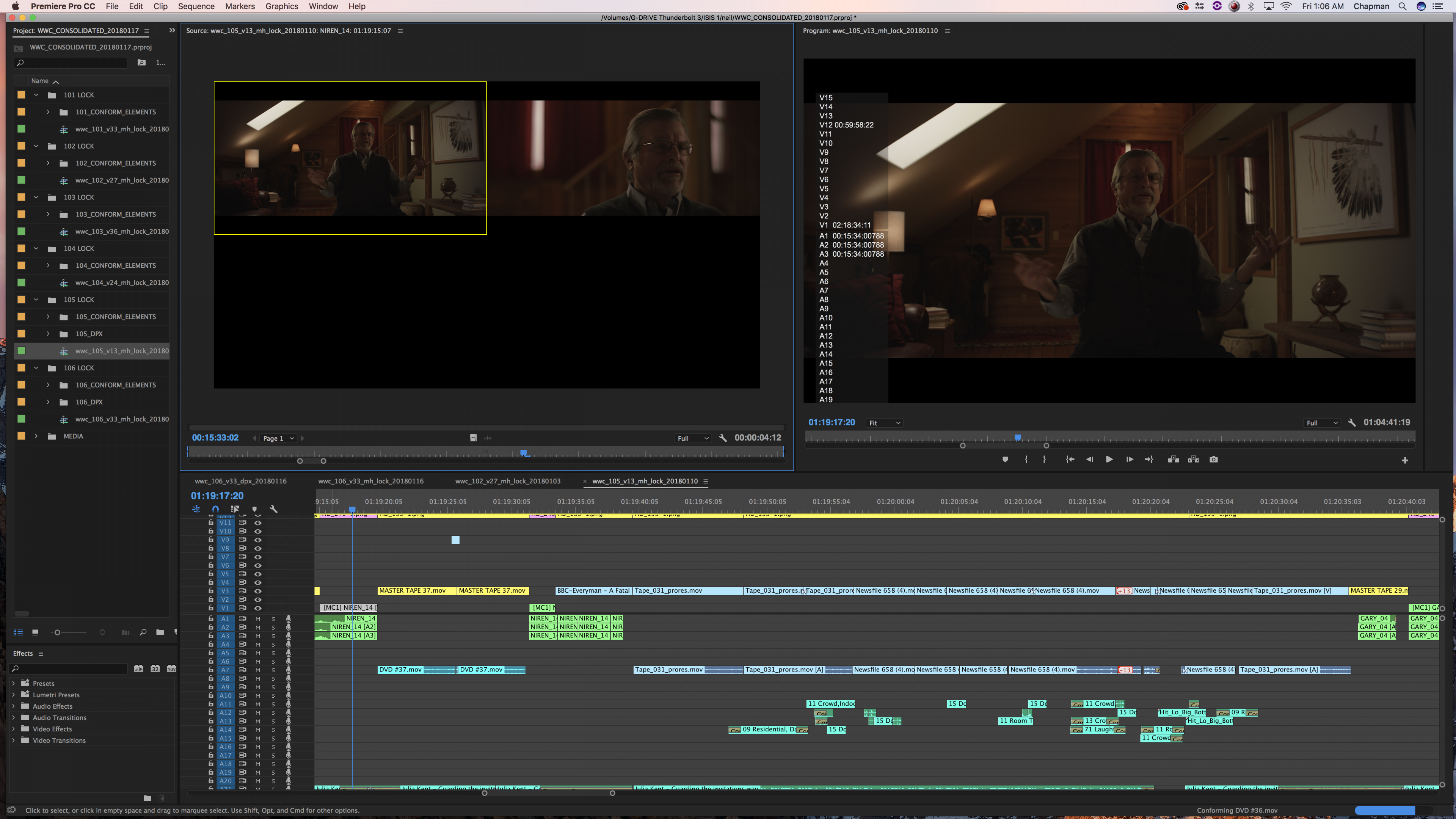 MEIKLEJOHN: Right. Right. And a big part of it is just watching. I took my time just watching everything and then just breaking things up in this kind of fat way in sequences in Premiere. I would have these big long general topics, but I wasn’t getting super-precious with my selects.
MEIKLEJOHN: Right. Right. And a big part of it is just watching. I took my time just watching everything and then just breaking things up in this kind of fat way in sequences in Premiere. I would have these big long general topics, but I wasn’t getting super-precious with my selects.
HULLFISH: There is some very unusual — for a documentary — editing. There’s a sequence that I’ll just call the psychedelic Haldol disco scene. Tell me about creating that experience.
MEIKLEJOHN: I came up from the commercial world and the music video world. I think this scene just called out to be cut more like a music video than a documentary. And they were drugging people, so we thought it was kind of appropriate that we could get a little psychedelic.
HULLFISH: There’s a couple of places where you needed to use kind of these graphic novel illustrations for scenes that had never been captured.
MEIKLEJOHN: We had a graphic artist — an animator (Corey Brickley)— onboard and we had scenes — like a secret meeting with the Bhagwan and the attack on Sheela — and instead of having these general b-roll shots, we thought it would be kind of interesting if we had these kind of animations to show those off. The graphic artist built our maps as well.
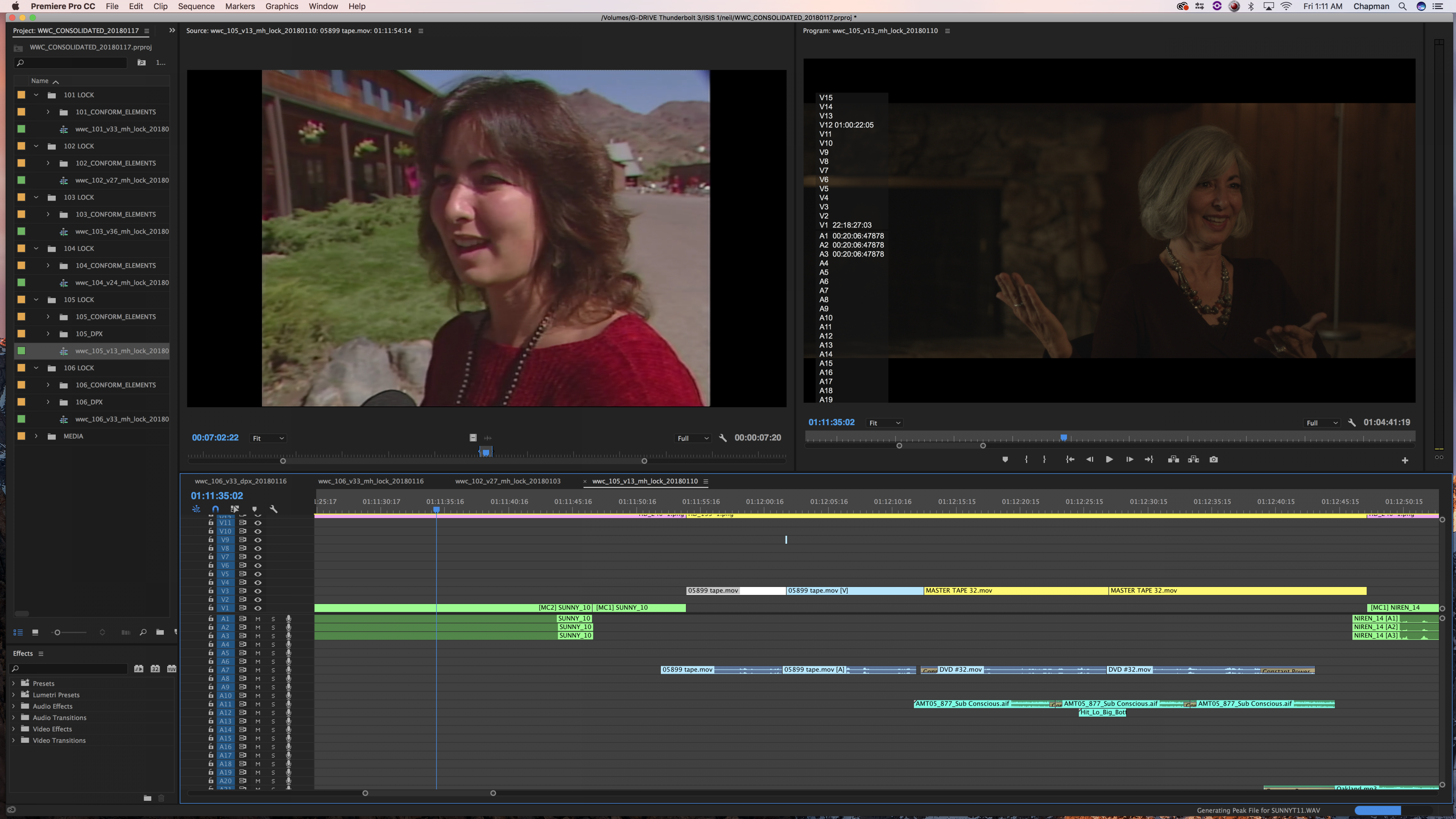 HULLFISH: I noticed in your timeline you’ve got a png file up on like V 13 throughout with various letterboxing and pillarboxing. Why was it necessary to pillar-box the 4:3?
HULLFISH: I noticed in your timeline you’ve got a png file up on like V 13 throughout with various letterboxing and pillarboxing. Why was it necessary to pillar-box the 4:3?
MEIKLEJOHN: For the archival footage, we had stuff all over the place. We had the 300 hours of news footage (from the early 1980s, clearly standard def, 4:3), and the people on the ranch had shot a lot of their own stuff as well. The Osho Foundation still exists today and we didn’t have access to their archives, but over the years, a lot of it made its way onto the internet. So, we do have a lot of their stuff. We also had 8mm and 16mm footage from people who had been to the ranch for the world festival. Premiere did a great job because we were able to pull all that stuff in, but the sizes were all different, and we wanted to give things a fairly even look so it wouldn’t be too jarring. But I think to smooth things out it gave all of the non-16:9 material a certain image size.
HULLFISH: What’s your philosophy on using video tracks and stacking stuff for alternates, or placing b-roll on a track above interview video?
MEIKLEJOHN: That’s a good question. I just do whatever gets the job done as quickly as possible and I’m fairly messy. I usually make a real mess of a scene with clips everywhere, and then once I’m feeling comfortable with it, I collapse almost everything down to v1. And then we had to deliver to sound design we had to deliver to the colorist, we had to deliver to Netflix. I was on my own for the most part, but at the end it just was too much.
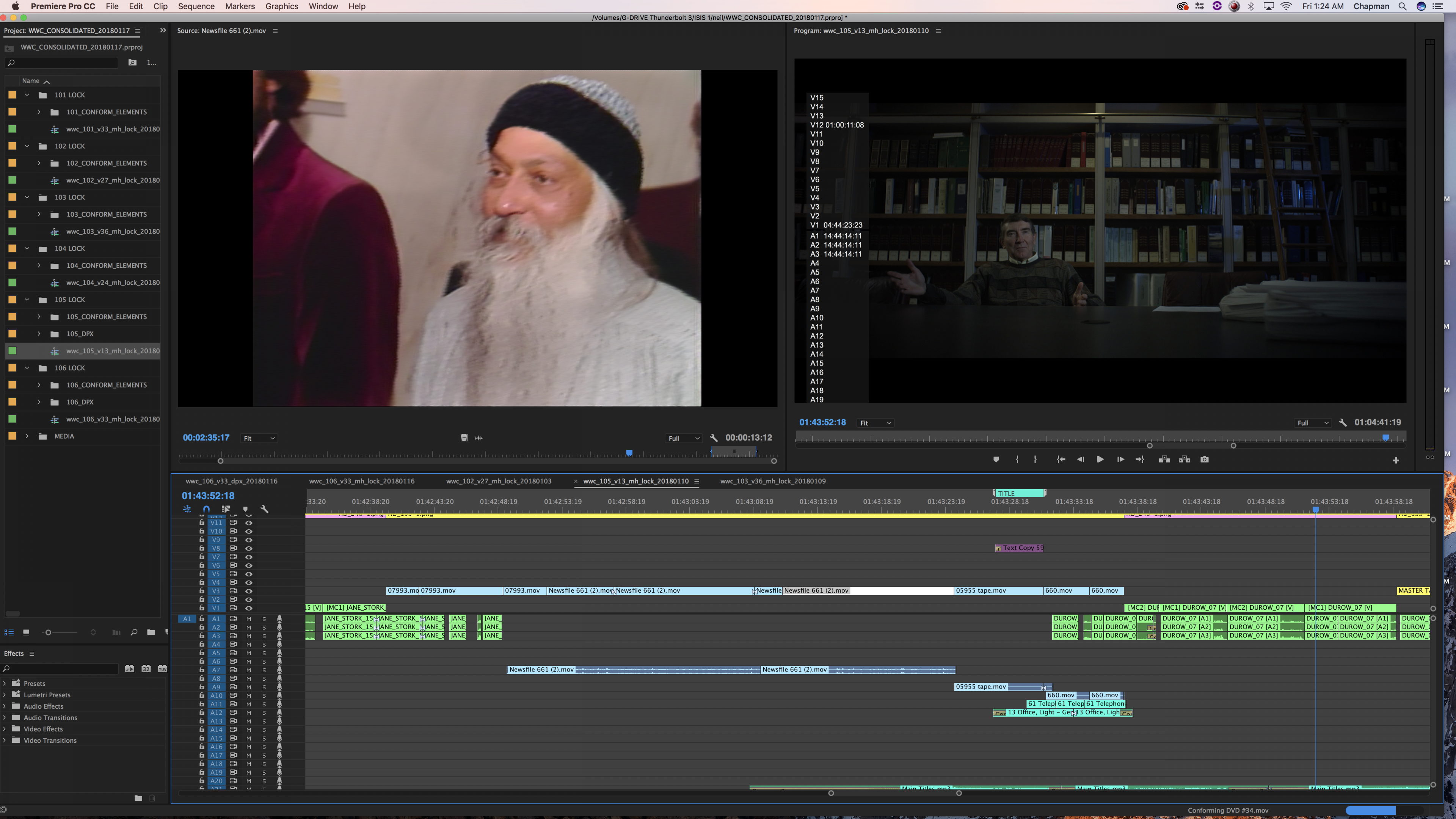 HULLFISH: I notice you included all the audio tracks for the interviews instead of picking the best mic. Was that because of something the audio people wanted or was that just an early version?
HULLFISH: I notice you included all the audio tracks for the interviews instead of picking the best mic. Was that because of something the audio people wanted or was that just an early version?
MEIKLEJOHN: When I was editing, I’d use the mic I liked the best, but the tracks you’re talking about were probably what the sound mixers wanted. Sometimes the mix from the onset mixer sounds great and sometimes we have to go into individual mics. It just depends upon the sentence.
HULLFISH: Anything to say about Premiere? You mentioned how it really held up to 400 hours of footage, which I’m astounded by. What kind of hardware were you using?
MEIKLEJOHN: We had stuff on G-Raids all over the place, and the Duplass brothers had a production company with an old Avid ISIS (SAN/RAID storage) and so we took the media off the individual drives and put it on the ISIS. I was actually a little nervous because I wasn’t sure if it would work well, but it actually worked pretty great. We had everything on the ISIS. For the most part, it was just my computer, but when we had two assistants on, we had three of us all reading that media and it worked really well. The biggest thing was just because we had so many different types of media: interviews, news footage, stuff ripped from DVDs, stuff ripped off line, in every conceivable format and every conceivable frame rate. It just was able to handle everything right away and be able to start cutting things into the sequence, mixing formats and organizing right off the bat. So, you could really just jump into the fun stuff, which is really what you want to be doing: focusing on the creative not the technical.
HULLFISH: I can’t remember when Premiere came in with the collaborative tools. Were you using the actual collaborative tools in Adobe or coming up with some other solution to have multiple people working at the same time?
MEIKLEJOHN: We were cutting this before the collaborative stuff came in. I had my master project and the assistants would make their own projects, so if they were prepping for color they would make a color project. The only thing we really had as proxies were the interviews. We got them down to 1920×1080, so for color they would go back to the raw footage conform the interviews to the edit and then if there were shots that needed to be replaced or they had higher res images they would cut those in. And then we just made a giant DPX sequence for the color. They would break off different projects for color prep or for mix prep.
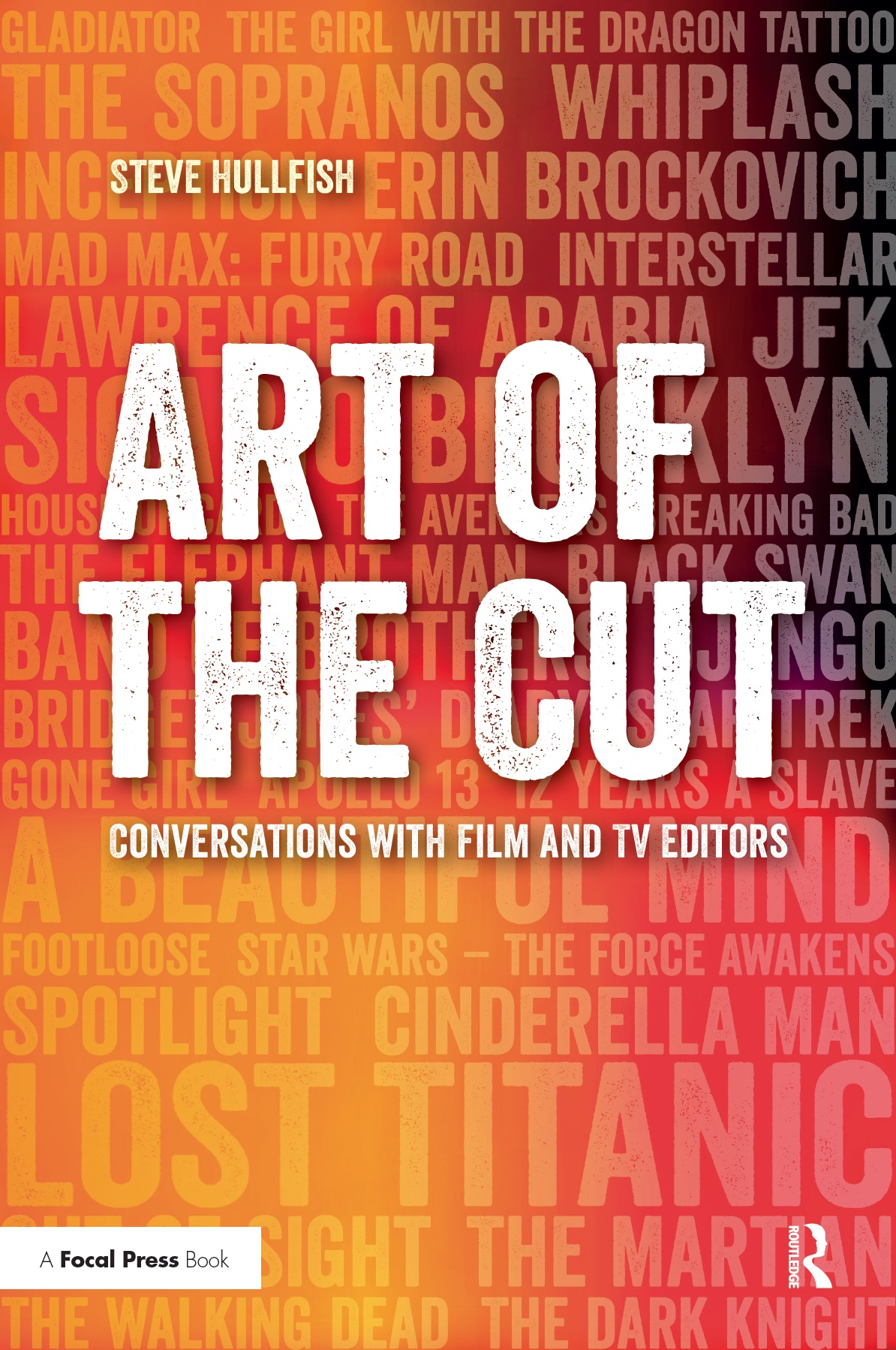 HULLFISH: Thank you so much for your time.
HULLFISH: Thank you so much for your time.
MEIKLEJOHN: You’re very welcome.
To read more interviews in the Art of the Cut series, check out THIS LINK and follow me on Twitter @stevehullfish
The first 50 interviews in the series provided the material for the book, “Art of the Cut: Conversations with Film and TV Editors.” This is a unique book that breaks down interviews with many of the world’s best editors and organizes it into a virtual roundtable discussion centering on the topics editors care about. It is a powerful tool for experienced and aspiring editors alike. Cinemontage and CinemaEditor magazine both gave it rave reviews. No other book provides the breadth of opinion and experience. Combined, the editors featured in the book have edited for over 1,000 years on many of the most iconic, critically acclaimed and biggest box office hits in the history of cinema.

Filmtools
Filmmakers go-to destination for pre-production, production & post production equipment!
Shop Now